90 degrees. It’s the ultimate expression of accuracy in many woodworking projects. Cabinets. Tables. Chests. Boxes. If you can get two adjacent sides of your project to flush up to the legs of a square, you are there. If the diagonals match perfectly, rock the heck on. When your miters meet at a crisp edge, pat yourself on the back.
But, if you have to cut a diagonal, errr…. Maybe you want to mark out the slopes of your dovetails. Maybe you want to find the exact angle at which the back of a chair leaves from the seat. This is where things get a little trickier, if you don’t have the right measuring tool.
Meet the sliding t bevel. Some folks may call it an angle finder, bevel gauge, bevel square or a host of other names, but whatever you call it, it’s a great little multitasker that can help you get out of trouble. This simple tool has a handle typically made of wood or plastic with a separate adjustable blade made of steel. That blade can pivot freely around a pin inside the handle, yet can be secured in place with either a latch or a thumb screw once the angle is found. It really is that simple.
The model I use is a sweet little red number from Bora Tools. This baby comes with a red plastic handle with a spirit level vial in the handle. The blade also serves as a seven inch ruler, but also can be secured with an easy to use plastic lever. The end of the blade is clipped at a 45 degree angle, which allows it to read into tight spaces.
So, what can you do with one? First – and probably most obviously, you can use the tool to find the angle of something. Place it against a leg on a chair, and you can find out what angle that leg meets the seat. If you want to know the exact degree of the angle, hold it against a protractor and bingo, you have that number.
But, say you don’t want to play the numbers game. That’s cool, too. Simply take the t bevel from the angle you want and set up whatever tool you want to use to duplicate that angle. Just be sure to lock the blade in place before you move it, otherwise things won’t line up exactly.
Oh, and if you are trying to find the angle of blade drift on your band saw, a t bevel will make that job a piece of cake.
Lock the blade at 90 degrees against a known reference and – yes – you have another square to check an assembly.
And, if you need to carefully mark out a given angle for a cut – maybe a dovetail – why invest money in a dedicated dovetail marker, when your t-bevel can be set to 7, 9, 14 or any other degree in between and locked in place to mark just one dovetail or a whole dresser’s worth.
While it’s not a tool I reach for every time I woodwork, for the times I do, it has been a true winner. At least that’s the angle I am taking.

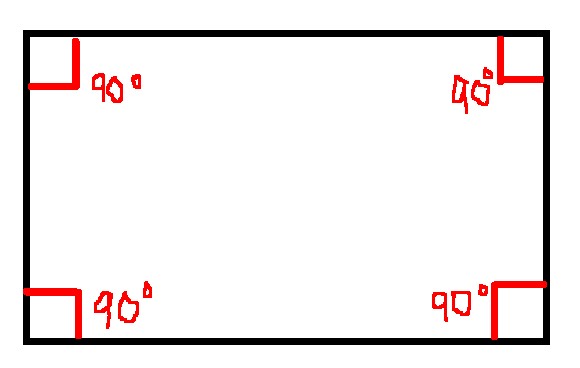
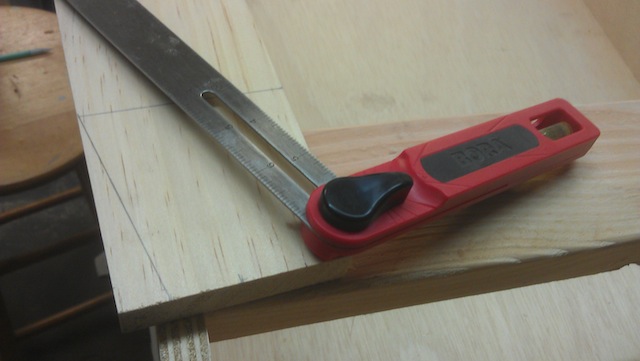
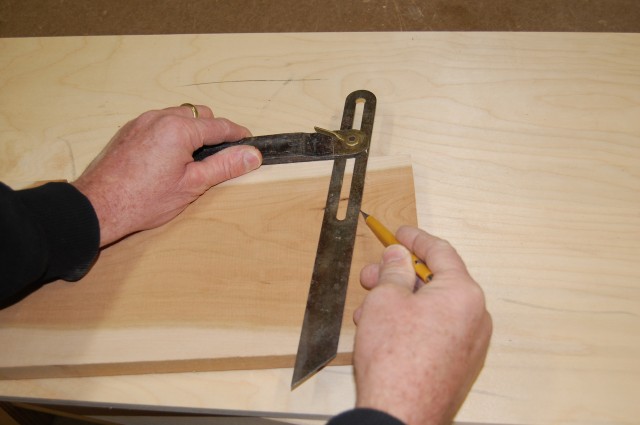
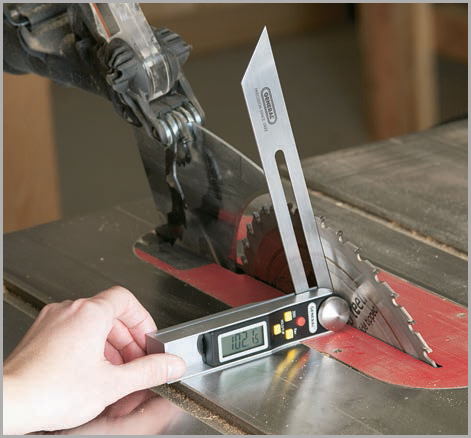
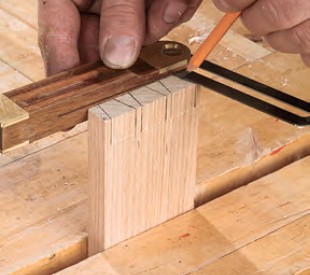
Sometimes your miter gauge from your table saw can substitute if you don’t have a t-bevel.
Mine became invaluable when we were laying a new hardwood floor in our house and had some really tricky angles to cut around the pantry entrance.
The doorway was diagonal to the room and that thing saved the day.